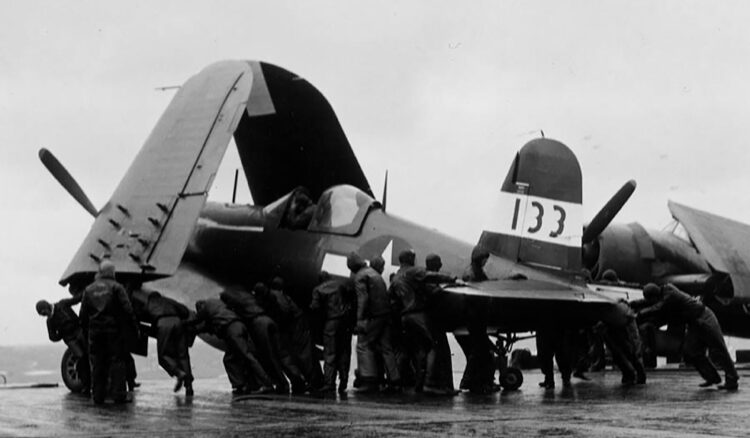
See the scale model of F4U-1D Corsair
Development of the F4U Corsair began in 1938. The finished Corsair was equipped with a 2000hp P&W R-2800 engine, a large 4m diameter propeller and a unique inverted gull wing construct. The first mass produced F4U-1 made its initial flight in the spring of 1942.
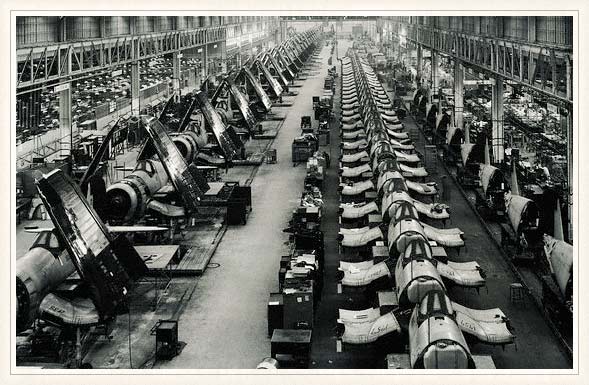
Despite its high performance, the F4U-1’s long nose and framed canopy reduced visibility from the cockpit and left wing stalls occured easily during low-speed flight. For these reasons F6F Hellcat took the place of main carrier-based fighter while Corsairs were relegated to US Marine Corps bases. Improvements on the Corsair, such as a raised pilot seat, bubble canopy to improve visibility, and right wing front edge spoiler were realized with the F4U-1A version.
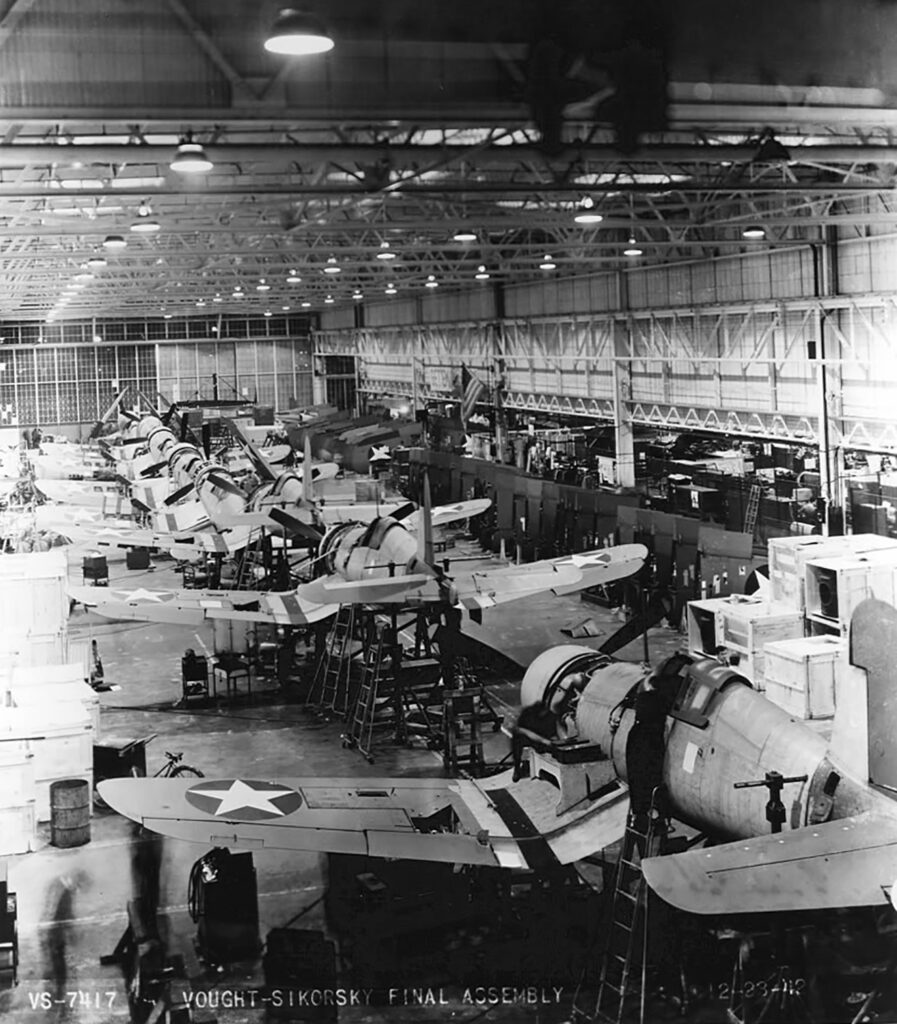
U.S. figures compiled at the end of the war indicate that the F4U and FG flew 64,051 operational sorties for the U.S. Marines and U.S. Navy through the conflict (44% of total fighter sorties), with only 9,581 sorties (15%) flown from carrier decks. F4U and FG pilots claimed 2,140 air combat victories against 189 losses to enemy aircraft, for an overall kill ratio of over 11:1. While this gave the Corsair the lowest loss rate of any fighter of the Pacific War, this was due in part to operational circumstances; it primarily faced air-to-air combat in the Solomon Islands and Rabaul campaigns (as well as at Leyte and for kamikaze interception), but as operations shifted north and its mission shifted to ground attack the aircraft saw less exposure to enemy aircraft, while other fighter types were exposed to more air combat. Against the best Japanese opponents, the aircraft claimed a 12:1 kill ratio against Mitsubishi A6M and 6:1 against the Nakajima Ki-84, Kawanishi N1K-J, and Mitsubishi J2M combined during the last year of the war. The Corsair bore the brunt of U.S. fighter-bomber missions, delivering 15,621 short tons (14,171 metric tons) of bombs during the war (70% of total bombs dropped by U.S. fighters during the war).
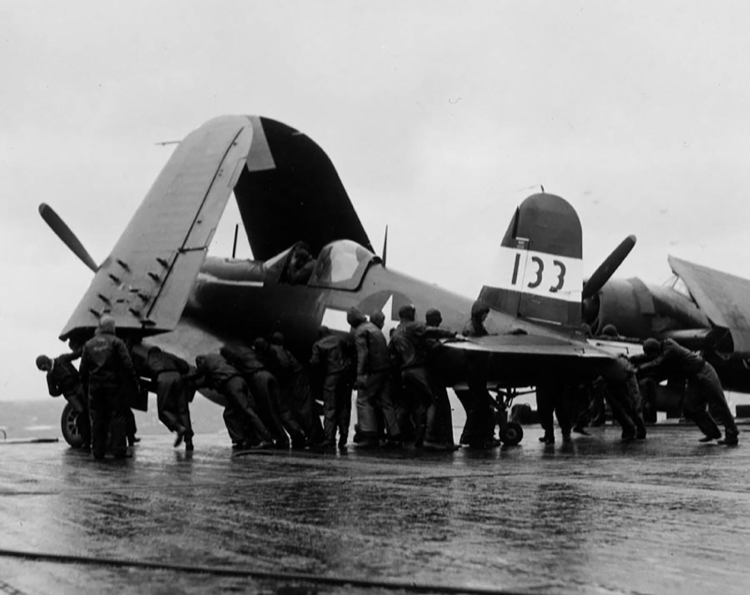
Corsair losses in World War II were as follows:
- By aerial combat: 189
- By enemy ground and shipboard anti-aircraft fire: 349
- Operational losses during combat missions: 230
- Operational losses during non-combat flights: 692
- Destroyed aboard ships or on the ground: 164
General characteristics
- Crew: One
- Length: 33 ft 8 in (10.26 m)
- Wingspan: 41 ft 0 in (12.50 m)
- Height: 14 ft 9 in (4.50 m)
- Wing area: 314 sq ft (29.2 m2)
- Empty weight: 9,205 lb (4,175 kg)
- Powerplant: 1 × Pratt & Whitney R-2800-18W radial engine, 2,380 hp (1,770 kW)
- Propellers: 4-bladed
Performance
- Maximum speed: 446 mph (718 km/h, 388 kn)
- Stall speed: 89 mph (143 km/h, 77 kn)
- Range: 1,005 mi (1,617 km, 873 nmi)
- Combat range: 328 mi (528 km, 285 nmi)
- Service ceiling: 41,500 ft (12,600 m)
- Rate of climb: 4,360 ft/min (22.1 m/s)
Armament
- Guns:
- 6 × 0.50 in (12.7 mm) M2 Browning machine guns, 400 rounds per gun or
- 4 × 0.79 in (20 mm) AN/M3 cannon, 231 rounds per gun
- Rockets: 8 × 5 in (12.7 cm) high velocity aircraft rockets and/or
- Bombs: 4,000 pounds (1,800 kg)
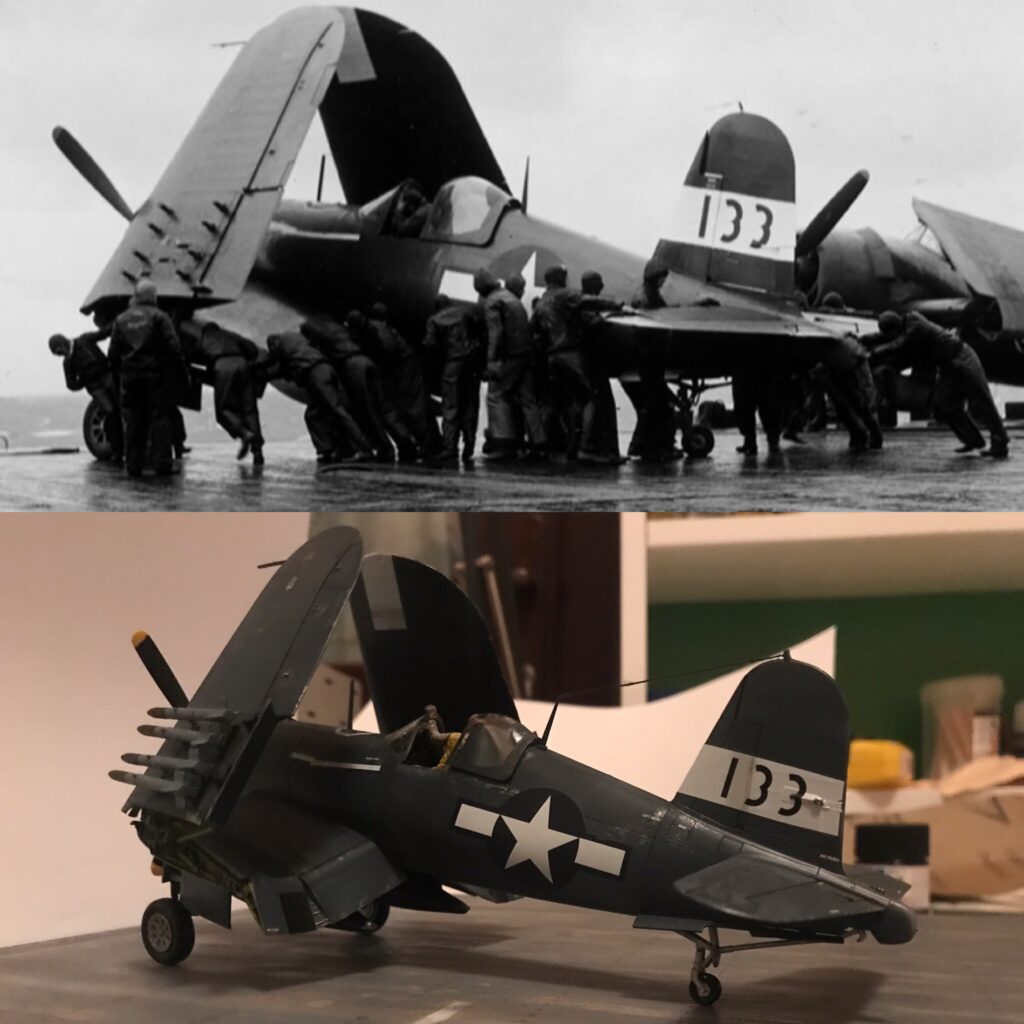
See the scale model of F4U-1D Corsair
Sources:
1- Whistling Death: The Chance-Vought F4U Corsair. Warfare History Network. 16 December 2018.

Be the first to comment